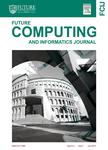版权所有:内蒙古大学图书馆 技术提供:维普资讯• 智图
内蒙古自治区呼和浩特市赛罕区大学西街235号 邮编: 010021

作者机构:Faculty of Science Helwan University Cairo Egypt
出 版 物:《Future Computing and Informatics Journal》
年 卷 期:2018年第3卷第2期
页 面:231-246页
主 题:Genetic bee colony algorithms Fish swarm algorithm Artificial algae algorithm Chicken swarm optimization Grey wolf algorithm Cat swarm optimization
摘 要:Bio-inspired computing represents the umbrella of different studies of computer science, mathematics, and biology in the last years. Bio-inspired computing optimization algorithms is an emerging approach which is based on the principles and inspiration of the biological evolution of nature to develop new and robust competing techniques. In the last years, the bio-inspired optimization algorithms are recognized in machine learning to address the optimal solutions of complex problems in science and engineering. However, these problems are usually nonlinear and restricted to multiple nonlinear constraints which propose many problems such as time requirements and high dimensionality to find the optimal solution. To tackle the problems of the traditional optimization algorithms, the recent trends tend to apply bio-inspired optimization algorithms which represent a promising approach for solving complex optimization problems. This paper presents state-of-art of nine of recent bio-inspired algorithms, gap analysis, and its applications namely; Genetic Bee Colony (GBC) Algorithm, Fish Swarm Algorithm (FSA), Cat Swarm Optimization (CSO), Whale Optimization Algorithm (WOA), Artificial Algae Algorithm (AAA), Elephant Search Algorithm (ESA), Chicken Swarm Optimization Algorithm (CSOA), Moth flame optimization (MFO), and Grey Wolf Optimization (GWO) algorithm. The previous related works are collected from Scopus databases are presented. Also, we explore some key issues in optimization and some applications for further research. We also analyze in-depth discussions the essence of these algorithms and their connections to self-organization and its applications in different areas of research are presented. As a result, the proposed analysis of these algorithms leads to some key problems that have to be addressed in the future.